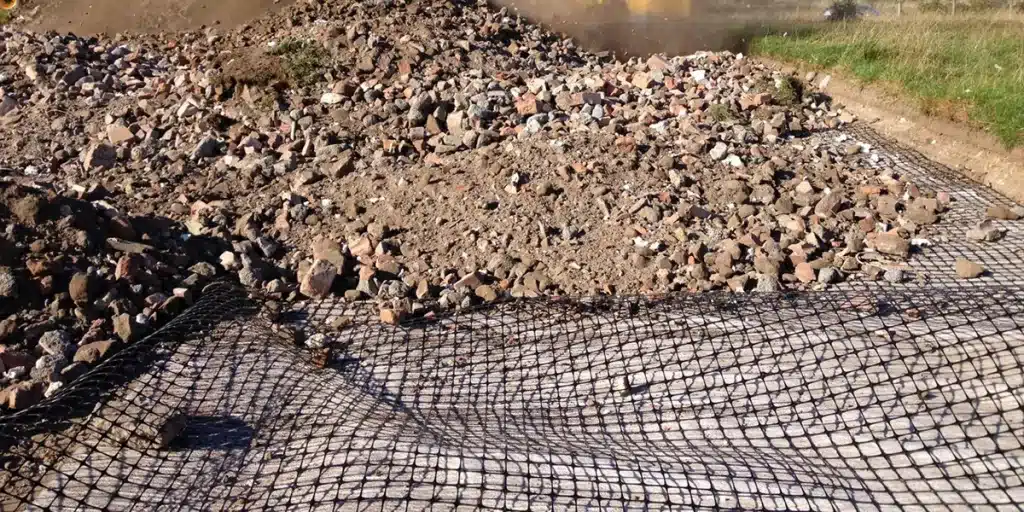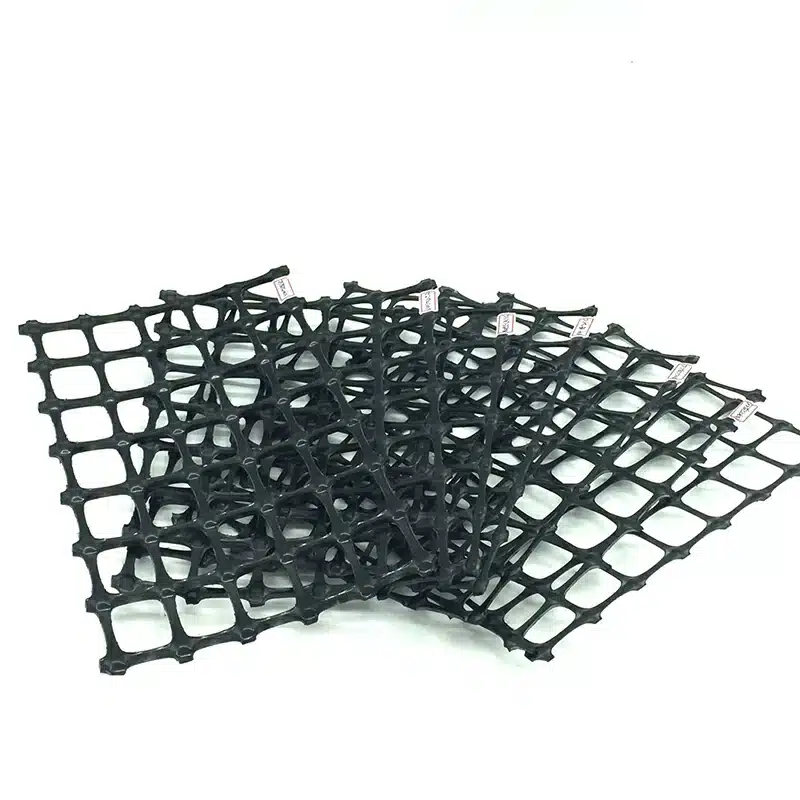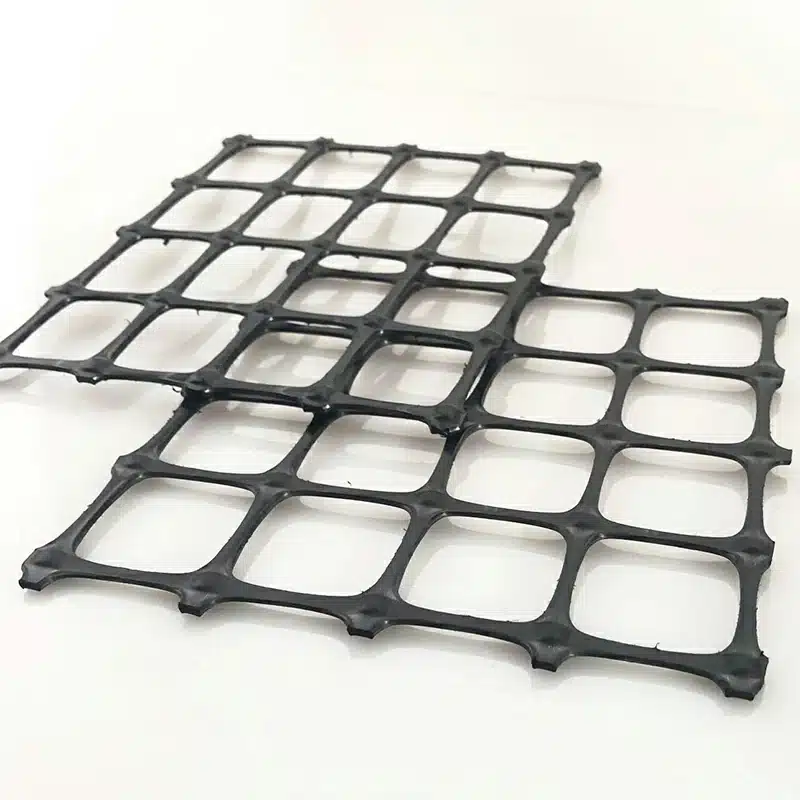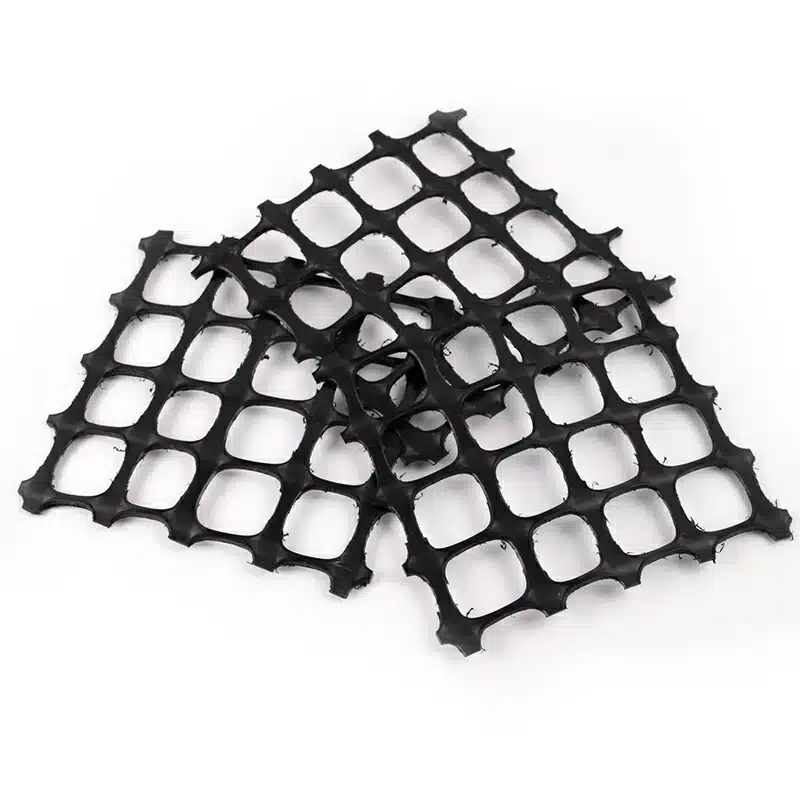+86-159 9860 6917
info@geofantex.com
geofantex@gmail.com
+86-400-8266163-44899
Geogrid soil stabilization is a groundbreaking innovation that’s reshaping the construction industry. This technology involves the strategic use of geosynthetic materials, such as grid-like structures made from polymers, fiberglass, or steel, to reinforce and stabilize soil. Geogrids play a pivotal role in distributing loads and minimizing stress on the soil, thus significantly enhancing its load-bearing capacity and structural durability. This eco-friendly solution not only reduces the need for extensive excavation and natural resource usage but also proves invaluable in applications ranging from road construction and retaining walls to embankments and erosion control. Embracing geogrid soil stabilization is the key to creating resilient and sustainable infrastructure in the modern world.

What is geogrid soil stabilization?
Geogrid soil stabilization is a construction technique that utilizes geosynthetic materials, often in the form of a grid or mesh, as a ground reinforcement fabric which provides strength to retaining walls and helps to prevent collapse, to reinforce and stabilize soil. These geogrids, crafted from materials such as polymers, fiberglass, or steel, are engineered to distribute loads and alleviate stress on the soil, ultimately bolstering its strength and durability.
When should you use geogrids rather than geotextile?
The choice between geogrids and geotextiles depends on the specific requirements of a construction project. Geotextiles are primarily used to separate, filter, and drain, whereas geogrids provide structural reinforcement, particularly in high-demand agricultural or heavy-load situations. Use geogrids when:
- Load-Bearing Capacity is Critical: Geogrids are ideal when your project requires increased load-bearing capacity, making them suitable for applications such as road construction, retaining walls, and embankments in high-demand agricultural or heavy load situations.
- Structural Longevity is a Priority: If extending the lifespan of your structure while reducing maintenance costs is essential, geogrids are the way to go. They offer enhanced durability, making them a wise choice for long-term projects.
- Stability on Challenging Terrains is Necessary: Geogrid soil stabilization excels in uneven or challenging terrains, making it a better choice when dealing with slopes, soil or rock stabilization, and erosion control in high-demand agricultural or heavy load situations.
What are the Scope of Application of Geogrid Soil Stabilization?
Geogrid soil stabilization has a wide range of applications in the construction and civil engineering industries. Its scope includes:
- Retaining Walls: Geogrids reinforce retaining walls, allowing them to bear heavy loads and resist soil pressures.
- Embankments: Geogrids provide stability to embankments and slopes, reducing the risk of erosion and landslides.
- Road Construction: Geogrids enhance the performance and durability of road pavements, reducing cracking and maintenance requirements.
- Mining and Landfills: In challenging terrains like mining sites and landfills, geogrid soil stabilization ensures stability and safety.
- Soil or Rock Stabilization: When the project necessitates stability in soil or rock, geogrids offer an effective solution.
What Are the superiority of Geogrid Soil Stabilization?
Geogrid soil stabilization provides numerous benefits, rendering it a compelling option in the construction sector. These advantages encompass:
- 1. Enhanced Load-Bearing Capacity: Geogrids reinforce the load-bearing capacity of soil, allowing for the construction of more substantial structures and accommodating heavier traffic loads.
- 2. Prolonged Structural Durability: Geogrids, by providing structural reinforcement, extend the lifespan of projects while concurrently curbing maintenance expenses.
- 3. Environmental Sustainability: Geogrid soil stabilization has the potential to significantly reduce the number of engineering works created through the earth’s surface using soil or rock for projects. This approach fosters environmental friendliness by minimizing the necessity for extensive excavation and the depletion of natural resources.

In conclusion, geogrid soil stabilization is a versatile and environmentally friendly technology that is transforming the construction landscape. Knowing when to choose geogrids over geotextiles and understanding their broad scope of applications can empower engineers and builders to create robust and long-lasting infrastructure in an eco-conscious manner.



Get Free Sample
We’ll respond as soon as possible(within 12 hours)






















